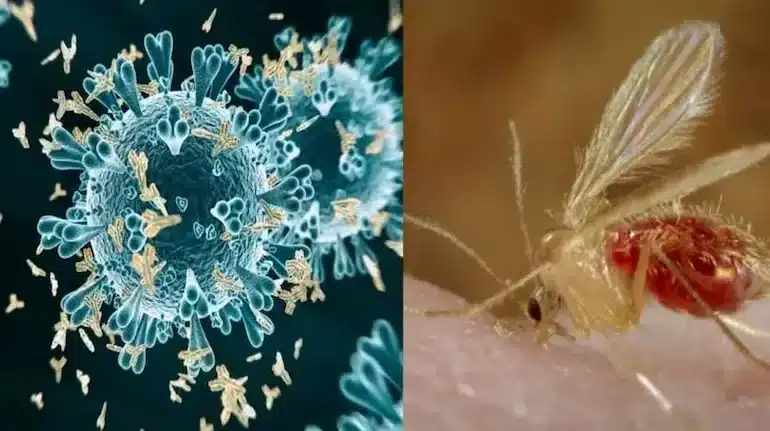About Chandipura Virus Infection:
- It is a virus of the Rhabdoviridae family, which also includes other members such as the lyssavirus that causes rabies.
- Several species of sandflies like Phlebotomine sandflies and Phlebotomus papatasi, and some mosquito species such as Aedes aegypti (which is also the vector for dengue) are considered vectors of CHPV.
- The virus resides in the salivary gland of these insects, and can be transmitted to humans or other vertebrates like domestic animals through bites.
- The infection caused by the virus can then reach the central nervous system which can lead to encephalitis — inflammation of the active tissues of the brain.
- Disease progression can be as rapid as a patient reporting high fever in the morning, and their kidneys or liver being affected by the evening.
- Symptoms
- The CHPV infection presents initially with flu-like symptoms such as acute onset of fever, body ache, and headache.
- It may then progress to altered sensorium or seizures and encephalitis.
- Respiratory distress, bleeding tendencies, or anaemia.
- The infection often progresses rapidly after encephalitis, which may then lead to mortality within 24-48 hours of hospitalization.
- This infection has largely remained limited to children below 15 years.
- Treatment: The infection can only be symptomatically managed as currently there is no specific antiretroviral therapy or vaccine available for treatment.
- Affected regions in India
- The CHPV infection was first isolated in 1965 while investigating a dengue/chikungunya outbreak in Maharashtra.
- However, one of the most significant outbreaks of the disease in India was seen in 2003-04 in states such as Maharashtra, northern Gujarat and Andhra Pradesh.
- The infection has largely remained endemic to the central part of India, where the population of CHPV infection-spreading sandflies and mosquitoes is higher.
Q1: What is Sickle Cell Anaemia (SCA)?
Sickle Cell Anaemia (SCA) is one of a group of inherited disorders known as sickle cell disease (SCD). It affects the shape of red blood cells, which carry oxygen to all parts of the body. Red blood cells contain hemoglobin, a protein that carries oxygen. Healthy red blood cells are round, and they move through small blood vessels to carry oxygen to all parts of the body.
Last updated on December, 2025
→ Check out the latest UPSC Syllabus 2026 here.
→ Join Vajiram & Ravi’s Interview Guidance Programme for expert help to crack your final UPSC stage.
→ UPSC Mains Result 2025 is now out.
→ UPSC Notification 2026 is scheduled to be released on January 14, 2026.
→ UPSC Calendar 2026 is released on 15th May, 2025.
→ The UPSC Vacancy 2025 were released 1129, out of which 979 were for UPSC CSE and remaining 150 are for UPSC IFoS.
→ UPSC Prelims 2026 will be conducted on 24th May, 2026 & UPSC Mains 2026 will be conducted on 21st August 2026.
→ The UPSC Selection Process is of 3 stages-Prelims, Mains and Interview.
→ UPSC Result 2024 is released with latest UPSC Marksheet 2024. Check Now!
→ UPSC Prelims Result 2025 is out now for the CSE held on 25 May 2025.
→ UPSC Toppers List 2024 is released now. Shakti Dubey is UPSC AIR 1 2024 Topper.
→ UPSC Prelims Question Paper 2025 and Unofficial Prelims Answer Key 2025 are available now.
→ UPSC Mains Question Paper 2025 is out for Essay, GS 1, 2, 3 & GS 4.
→ UPSC Mains Indian Language Question Paper 2025 is now out.
→ UPSC Mains Optional Question Paper 2025 is now out.
→ Also check Best IAS Coaching in Delhi

















